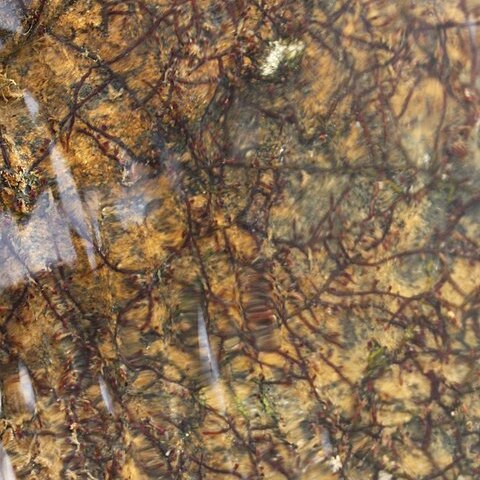Moss-like herbs widely' differing in shape and size, much branched, forming dense mats on rocks; stems thin, terete. Leaves tristichous, the rows in the older plants sometimes indistinct, entire, membranaceous, nerved or unnerved, the apex obtuse or acute, often divided into 2 or 3 parts in older leaves. Flowers terminal or on short side-branches, enclosed between 2-3 distinctly larger leaves when young; perianth well-developed, membranaceous, 3-partite, marcescent; stamen 1, the filament slender, the anther ovate, introrse, with elongate connective, the pollen globose; ovary 3-celled, with 3 equal carpels, ovoid to subglobose, rounded or attenuate at the base, the placentas swollen, dehiscing with 3 equal valves each with 3 ribs; seeds; numerous.
The abbreviated flowering shoots comprise 2 or more short leafy sterile branches which protect a greatly reduced stem terminated by a solitary flower; the long stems elongating in relation to the depth of submergence, freely branched producing leafy branchlets and short flowering shoots.
Leaves small, ± spaced along the stems becoming closely imbricate on the branches and flowering shoots, arranged in 3 ranks (tristichous), sessile, entire or divided.
Basal part thalloid, ribbon-like, branched, bearing moss-like shoots which vary greatly from abbreviated flowering shoots to long leafy stems.
Submerged, annual or perennial, freshwater herbs, firmly fixed to rock substrate in cataracts and spray at edges of waterfalls.
Flowers terminal and/or axillary, each subtended by 2 scarious bracts longer than the leaves; spathella absent.
Perianth segments (tepals) 3, joined for part of their length, scarious, usually ovate.
Capsule ovoid, ribbed, septicidally 3-valved; seeds small, numerous.
Stamen 1.Ovary sessile, 3-locular, topped by 3 free linear styles.

